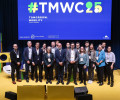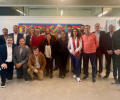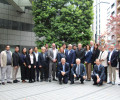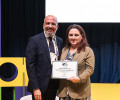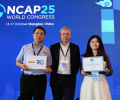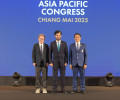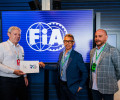Preparing to meet the cars of tomorrow

Yesterday’s keynote address by Ton Steenman, a key figure in computing giant Intel’s involvement in the automotive world, gave delegates an insider’s view of how the world of transport is evolving and the speed at which radical change is taking place.
Steenman opened his talk by highlighting the swiftness of the developments now engulfing all major industries, including that of the automobile.
“To give an example, in 1996 Kodak was a company with a market capitalisation of $28bn but in 2012 they filed for bankruptcy. In same year, a [photo-sharing] company called Instagram was purchased by Facebook for $1bn. This is the speed of the changes underway.”
He then guided delegates through some of the major innovations likely to impact on transportation, such as developments in the realm of robotics and autonomous cars, which he said would have a major presence on roads within the next 5-7 years, and also in 3D printing, which could transform transportation in a major way.
“3D printing is very quickly getting to the stage where you are thinking ‘what do I want to wear tonight?’ and you will print that out. When you’re done with it you’ll recycle it and print a different piece of clothing the next day,” he said.
“Imagine the impact that will have on the transportation of goods and services on the economy. You won’t have to ship packages any more. You won’t have to go to a store to buy things any more. The whole notion of large manufacturing facilities will probably transition to micro manufacturing facilities on the corner of your street. This could have far-reaching implications for the transportation industry.”
It is in the area of data, however, where Steenman sees the biggest changes happening.
“Data will have a profound impact on transportation,” he said. “If you look at evolving technology in cloud computing, storage, how devices are becoming more intelligent and the importance of data and services, we can do amazing things.”
Steenman spoke about how the airline industry has developed a simple system to monitor engine health, using the data harvested from sensors to analyse efficiency and predict maintenance schedules, with profound effect. This leveraging of data is the key to how mobility will be transformed he said.
Information currently locked in a car’s systems will be a rich source of knowledge when connected to other data sets gleaned from connected infrastructure elements and devices.
“Everything will be connected,” he said, and the cross-referencing of enormous data streams and the constant improvement of analytic tools, will, he added, open up opportunities for the development of new services for the transport industry.
Steenman’s fascinating speech inevitably prompted many questions from the floor, with a representative from Finland’s Autoliitto asking how gathering data in such large quantities will impact on personal privacy.
Steenman responded that younger people are much less concerned with issues of data privacy than older generations and that the positive benefits resulting from the application of such information in terms of improving road safety and easing congestion far outweigh the negative aspects.
Miguel Nadal from Spain’s RACC then asked the Intel Vice President about the risks associated with changing a mobility club business model that has existed for more than a century too quickly.
“If we don’t do something, the start-ups will,” said Steenman. “It goes back to what I said about Kodak. It is almost a case of looking at what the innovative start-up companies are doing and collaborating with them. It is about learning from their innovation and embracing it instead of trying to resist it.”

 Facebook
Facebook Twitter
Twitter